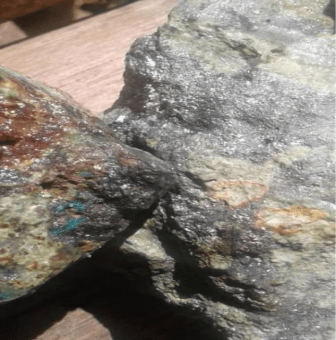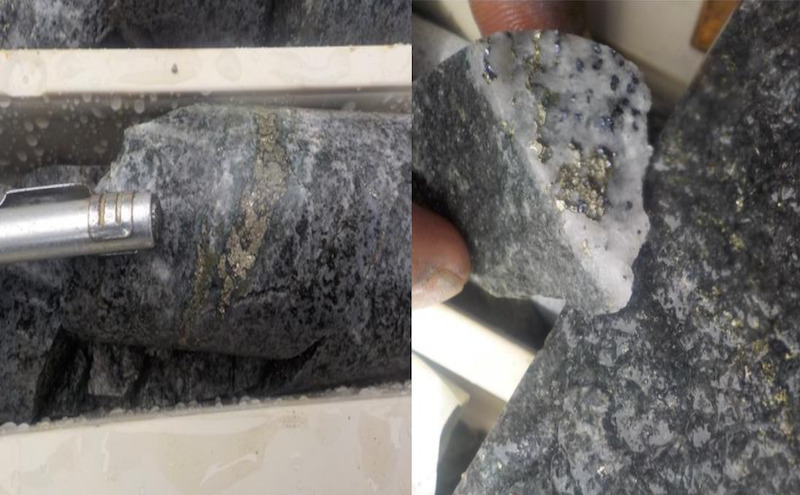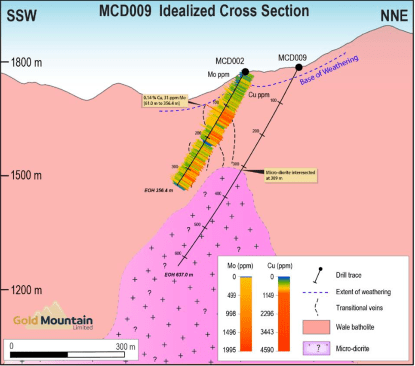GMN hits monster copper intercept in PNG porphyry search

Pic: Bloomberg Creative / Bloomberg Creative Photos via Getty Images
Gold Mountain has reported the widest copper-molybdenum intersection to date while drilling into a porphyry system at their Wabag project in Papua New Guinea and is looking to focus on identifying mineralised skarns and intrusives.
Gold Mountain (ASX:GMN) reported an update on their deep drilling program at their Monoyal target (holes MCD008 and MCD009) and their exploration activities at their Mt Wipi target. The work points to the potential of mineralised intrusives and the presence of skarns either of which could prove to be of economic grade. Assay results from MCD009 are eagerly awaited and the company aim to define a drillable target at Mt Wipi this month.
Hole MCD008 was drilled to a depth of 684.3m into the Wale Batholith, which is a large, low-grade porphyry intrusive and contained a 240m at 0.1% copper and 88ppm molybdenum intercept with Individual 1m intervals assaying up to 0.32% copper, 3000ppm molybdenum (“Mo” or “Moly”) and 1.68 grams per tonne gold.
Molybdenum is considered an important secondary mineral in many porphyry deposits, and GMN said it was buoyed by the presence of anomalous values of the metal at the end of the hole, where the last 94m graded 133ppm Moly.
The presence of Moly to the end of the hole indicates the Wale Batholith is mineralised and prospective and GMN’s porphyry expert, Phil Jones postulates that “if younger intrusives have cut the Wale Batholith they are more likely to contain increased levels of mineralisation as the copper, molybdenum and gold mineralisation within the Wale Batholith will be remobilised by the younger intrusive and deposited in higher grade pods which could prove to be of economic grade” he goes on to say “It is also thought that where the Wale Batholith has intruded into the adjacent carbonaceous sediments there is significant potential they could host skarn deposits, evidence of which have been seen at Lombokai Creek”.
Lombokai Creek is located around 2km from where Gold Mountain are drilling holes MCD008 and MCD009. Seven of the ten outcrop samples taken from Lombokai Creek in 2019 returned elevated levels of copper with one sample assaying 10.0% copper and one other sample recording 1.36 gram per tonne gold.

Drilling of hole MCD009 has just been completed and, whilst we will have to wait until April for the assay results, the visual analysis shows that the hole has intersected the Wale Batholith to a depth of 309m, the hole has then intersected an altered micro-diorite to the end of the hole at 637m. The micro diorite could possibly represent a younger mineralised intrusive. The micro-diorite shows evidence of porphyry mineralogies including quartz, magnetite, epidote and sulphide veins and the presence of chalcopyrite and Moly have been observed along fracture surfaces.


Phil Jones said “The dioritic mineralised porphyry intersected in MCD009 appears to cut the older low-grade Wale Batholith which is of tonalitic composition and the assay results are eagerly awaited”.
Mt Wipi work ongoing
It seems Jones is also pretty excited about the recently granted tenement at Mt Wipi. In late January Phil said, “High-grade rock chip samples (9.64% copper, 1.96 g/t gold and 100 g/t silver) and channel samples (including 5m @ 2.57% Cu, 0.53 g/t Au and 33.56 g/t Ag) in conjunction with anomalous stream sediment samples and mapping, have defined intrusives and skarns which highlight the strong exploration potential at Mt Wipi for the location of a large mineralised system”. The samples he was referring to were taken from an area 3km long by 1km wide.
In the latest press release GMN provided an update on the ongoing work at Mt Wipi where 250 soil samples have been collected. Results from this soil programme will assist in defining the first drillable target at Mt Wipi this month. GMN also reported that they were widening the potential exploration envelope at Mt Wipi on the basis that local landowners had identified numerous alluvial gold occurrences within the current EL
This article was developed in collaboration with Gold Mountain, a Stockhead advertiser at the time of publishing.
This article does not constitute financial product advice. You should consider obtaining independent advice before making any financial decisions.
Related Topics

UNLOCK INSIGHTS
Discover the untold stories of emerging ASX stocks.
Daily news and expert analysis, it's free to subscribe.
By proceeding, you confirm you understand that we handle personal information in accordance with our Privacy Policy.








